We’ve all known days in which the weather is totally unpredictable: warm sunshine one moment, clouds bringing chill the next, then wind and rain, after which the sun pops out. This sort of instability is a fitting metaphor for what we are dealing with right now with regard to Gaza, Hamas, the “Trump plan,” and more.
Anxiety in the country is very high, for we lack clarity as to when the current situation will be resolved, or how. Or whether it truly will be resolved.
~~~~~~~~~~
Following October 7, Prime Minister Netanyahu set two goals for us with regard to our war with Hamas.
One is to defeat this terrorist group sufficiently so that they can no longer govern in Gaza and will no longer represent a threat to the people of Israel in the future. This was, and is, an existential issue.
Our troops fought magnificently over the course of the 15 months in which the IDF was actively engaged in battle in Gaza (from mid-October 2023 through mid-January 2025). Our regular soldiers and reserve forces alike – of superb caliber — were committed to their tasks, some giving their lives for the goals of the war, others bearing wounds both physical and emotional.
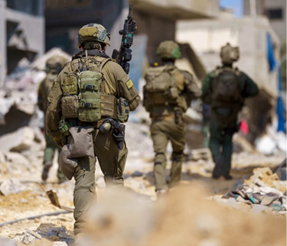
~~~~~~~~~~
We degraded Hamas considerably, killing some terrorists in battle, capturing many others. We discovered and dismantled underground tunnels and control centers, destroyed caches of weapon, took out launching sites, and exposed the use Hamas made of hospitals.
We had actually reached the point at which formal Hamas battalions had been taken out and the remaining forces were operating only in guerilla fashion. But we had not yet dismantled them to a point at which they would no longer pose a threat in the future.
There were several reasons for this:
The Biden administration hampered our operations in multiple respects. It is difficult to avoid the feeling that this administration did not want Hamas taken down.
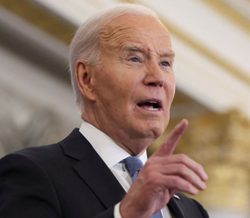
They criticized the way we were treating the civilian population of Gaza – in spite of the fact that Israel has been more careful with regard to these enemy civilians than any nation at war has ever been, coupled with the fact that Hamas, using civilians as human shields, has been responsible for a large percentage of the civilian deaths.
They made demands on us concerning how we should operate. This was in part with regard to how much “humanitarian aid” Israel would let into Gaza – aid that was in some good measure usurped by Hamas and thus strengthened the terrorists we were working to defeat.
Additionally, Biden withheld shipments of some military equipment that Israel had already paid for and needed in order to defeat Hamas.
~~~~~~~~~~
Then there was the matter of the network of tunnels that the IDF had been working diligently to dismantle for over a year: it turned out that it was far more extensive than had been anticipated. It was vast – representing years of labor and enormous expenditures of funds. The dimensions of the effort expended for this network boggles the mind. Just a month ago, it was estimated that as much as 40% of the system, representing tens of kilometers of tunnels, remains:
https://www.jpost.com/israel-news/article-836273
The terrorists have been able to hide operatives and store weapons within this remaining portion of the tunnel system. At the same time, they have been recruiting new members.
What became obvious is that Israel had months if not years of additional work to do in order to complete the necessary task of taking down Hamas.
~~~~~~~~~~
With all of the above, there was yet another very significant factor – arguably the most significant of all – that slowed the process of defeating Hamas: The existence of hostages. On October 7, 251 people from Israel had been abducted by Hamas and others cooperating with Hamas (PIJ and “ordinary citizens”) and brought into Gaza; these hostages included children, women, and the elderly.
Bringing home the hostages is the other goal of the war.
What has hung over us very heavily is the question of whether it is actually possible to achieve both goals. Often it has seemed that it may be necessary to choose one goal or the other.
The members of Hamas are evil to the core, lacking any humanitarian sensibility: The hostages represent no more than expendable commodities to them. The capture, for example, of three members of the Bibas family: a three-year-old and a ten-month-old along with their mother, Shiri, tore the hearts of the nation. That heartbreak was exacerbated when Yarden Bibas, father of the family, was recently brought out of captivity, agonized because he had been separated from his family at the time of capture and to this day does not know their condition; he hopes against all odds that they are alive and he will see them again.
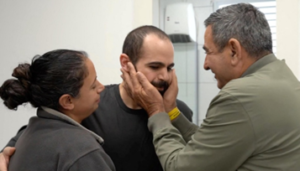
The leaders of Hamas quite obviously know that holding innocent Israelis gives them an advantage. There have been sites that the IDF has refrained from bombing because of fear that hostages were being held there, in tunnels underground.
And there is the bargaining that has transpired: Demands by Hamas for ceasefires that allow them the opportunity to strengthen, along with the release from our prisons of convicted terrorists, some with blood on their hands – in order for us to secure the freedom of just some of the hostages.
Hamas is also adept at utilizing hostages for filming propaganda videos designed to further undermine the morale of the nation.
With this horrific situation, has come a very high price in terms of the unity of the nation – a nation that to a great degree lives with heartache.
There are those who demand that our government pay any price in terms of providing Hamas with a total ceasefire, in order to secure the release of all the hostages before it is too late. We know that some hostages have already been killed, and others are being tortured and starved. At present Hamas is thought to be holding approximately 70 hostages, with only half of these thought to be still alive.
The argument is that ransoming of captives is a primary Jewish value.
However, others (I among them) argue that this obligation is not absolute according to the rabbis and must be measured against the cost to the nation as a whole. To allow Hamas to remain standing is to invite another massacre of dimensions that are unthinkable; to continue to release terrorists who have already murdered is to set up the enormous likelihood that other Jews will yet be killed by them.
Hamas has said repeatedly that the only way to achieve the release of all of the hostages is for the IDF to withdraw totally from Gaza, leaving the terrorist entities standing for another day.
~~~~~~~~~~
Until recent weeks, this is the dilemma in which Israel was caught. But now, just possibly, the situation is shifting. I suspect so and pray so.
In late November of 2023, some hundred hostages were released by Hamas in exchange for a brief ceasefire and the release of some terrorists from our prisons. A handful of hostages made their way out either via an IDF rescue or simply escaping.
But until late January of this year, there had not been another ceasefire agreed to by Israel in a deal to secure the release of additional hostages. There had been a plan for a ceasefire deal advanced by the Biden administration but rejected by Netanyahu because of its terms.
Just days before the inauguration of Donald Trump on January 20, his newly appointed Middle East envoy Steve Witkoff paid a visit to Netanyahu and walked out with an agreement by Israel to accept the same Biden ceasefire deal that had been considered unacceptable previously.
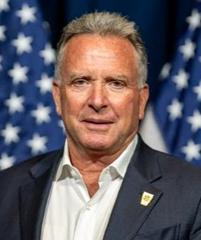
I was not in the room when Netanyahu and Witkoff had their significant discussion. I cannot state with certainty that there was not a major promise made by Witkoff to Netanyahu that convinced our prime minister that the deal was worth it. What I can speak to are the reports of major strong-arming by Witkoff, with threats implicit. At any rate, the deal was done in time for Trump to announce it at his inauguration.
It involves three stages, and we are four weeks into the first, six-week stage now. It involves a ceasefire with a partial pullback of the IDF, and the release of small numbers of hostages – in the main, three at a time; in exchange, unconscionable numbers of terrorists are to be released from our prisons.
This current stage is to be followed by a second, which involves release of the remaining live hostages as well as some deceased, and a full pullback by the IDF from Gaza. That is, Hamas would be left standing. Negotiations for this second stage are supposed to be happening now, in the first stage.
~~~~~~~~~~
Since this hostage deal has begun, a number of events have taken place that I believe are relevant to the deal.
The first is the announcement for solving the situation in Gaza made by Trump on February 7. In a nutshell, it involves moving all of the Gazans out – to other Muslim countries, primarily Jordan and Egypt. The US would then take over in Gaza (“buy” Gaza?) and supervise a major reconstruction that would take 10 to 15 years; the end result would be a high-end resort area more beautiful than the Riviera.
It is pointless to focus on details, as they have morphed over the course of days. There would be US army stationed in Gaza, but no, on second thought that won’t be necessary. The relocation of Gazans would be permanent, but no, perhaps they might come back after reconstruction is complete.
And while there is a response that he’s crazy to put forth such a plan, the fact is that Trump is not crazy at all, although he is exceptionally flamboyant and floats ideas in a grandiose fashion before having thought through details.
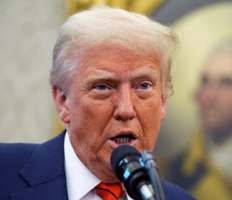
What is important here is that his plan shakes things up, offering a new and different scenario for resolving the situation in Gaza. A new plan is desperately needed. Netanyahu was highly enthusiastic. Defense Minister Katz subsequently ordered the IDF to come up with a plan for safe ports which Gazans wanting to leave might utilize.
~~~~~~~~~~~
The second thing that has happened is that Netanyahu was in Washington last week and met extensively with the president. The outcome is that Bibi is praising the relationship between Israel and the US: “Trump is greatest friend Israel has ever had.” This should be noted well, with regard to expectations that we will have US backing going forward.
Secretary of State Marco Rubio was here – just yesterday, Sunday – and held what was also apparently a very warm meeting with Netanyahu.
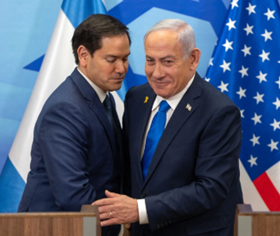
Declared Netanyahu: “Under President Trump’s leadership, and working together with you, Secretary Rubio, Marco, the best days of our alliance are still yet to come.”
https://www.jns.org/full-remarks-netanyahu-and-rubio-presser-in-jerusalem/
~~~~~~~~~~
Let us, then, turn our focus back to the hostage deal. Last week, Hamas – in a power play – announced that the scheduled release of three hostages on Saturday was cancelled because Israel was remiss in honoring all aspects of the deal and now had to provide “compensation.”
Trump’s response was tough: If it were up to him, he said, Hamas should be told to release all of the remaining hostages scheduled for the first stage of the deal, or all hell would break loose. However, he qualified, this was up to Israel.
What Israel did was call up reserve forces and station them right outside of Gaza, ready for a major operation if Hamas did not release the remaining hostages from the first stage of the deal. But in the end, when Hamas offered three hostages, as originally planned, Netanyahu accepted this.
There was concern in some quarters here that Trump would see Netanyahu as weak for not allowing all hell to break loose. But that has not been the case; communication between the two leaders appears solid. And I understood Netanyahu’s difficult position: if he unleashed war on Hamas on Saturday for not releasing all the hostages for the first stage of the deal, we would have lost the opportunity to free three who ultimately were brought out: Sagui Dekel-Chen, Sasha Trupanov and Yair Horn.
In return, Israel released from prison 369 terrorists, 36 of whom were serving life sentences. This disproportionate release is obscene: 123 terrorists (12 serving life sentences) for each hostage.
There is now an effort being expended to secure the release of an additional six hostages in coming days.
In all, there are 14 hostages yet to be released in stage one of the deal. Six deceased hostages are set to be released on Thursday.
~~~~~~~~~~
I will suggest here that the dynamic of the hostage deal has shifted in what may yet be very significant ways. Consider:
Netanyahu is working to extend the current first phase of the deal “beyond the designated 42 days, which are set to end on March 1, and secure the freedom of more hostages as part of phase one, including more hostages Israel now knows are in poor health.
“He wants Israel’s negotiators to explain to the Qatari and Egyptian mediators, with US support, that it’s also in the interests of Hamas to extend phase one since this would ensure the ceasefire remains in place for longer.” (Emphasis added)
This is putting Hamas on notice that there may not be a ceasefire for stage two. From the beginning Netanyahu had held this position.
Negotiations for stage two are supposed to be taking place now. But they cannot proceed without a vote from the Security Cabinet regarding this – Finance Minister Smotrich had secured a commitment for this as part of the terms for his party voting for stage one. I am assuming this means a vote on what will be offered in those negotiations.
Israeli negotiators apparently have left for Cairo, but at this point only to discuss extending stage one.
~~~~~~~~~~
At one point recently Rubio had said that Hamas was evil and had to be eradicated. Then subsequently he commented that defeating Hamas would not be sufficient. At first blush I wondered why he had changed his stance, then it became apparent to me that he was talking about moving Hamas out of Gaza.
~~~~~~~~~~
Witkoff confirmed this in an interview yesterday, when discussing stage two negotiations, which would be held: “It just is a little bit more intricate and complicated in terms of how we bring the two sides together on this. Phase 2 contemplates an end of the war, but it also contemplates Hamas not being involved in the government and being gone from Gaza. So we’ve got to square those two things.” (Emphasis added)
Hamas is very unlikely to agree to this, in which case, we return to fighting. I had been very uneasy about Witkoff’s talk of going to stage two, but if these are the terms…
Scheduled for release in stage two are 19 soldiers, thought to be still alive. But there are reports that Egypt and Qatar, “mediators” in the negotiations, will try to delay release of hostages in stage two until terms acceptable to Hamas have been reached. When Witkoff talks about complicated negotiations, he is not kidding.
~~~~~~~~~~
I end here with these words from Netanyahu today: “As I promised – the day after the war in Gaza, there will be no Hamas or Palestinian Authority.“
“I am committed to the Trump plan to create a different Gaza.”
https://www.israelnationalnews.com/news/404064
~~~~~~~~~~
I ask for prayers for Israel’s wellbeing – for the wisdom and strength of our leaders and the safety of all Am Yisrael.
~~~~~~~~~~
©Arlene Kushner. This material is produced by independent journalist Arlene Kushner. Permission is granted for it to be reproduced only with proper attribution.
